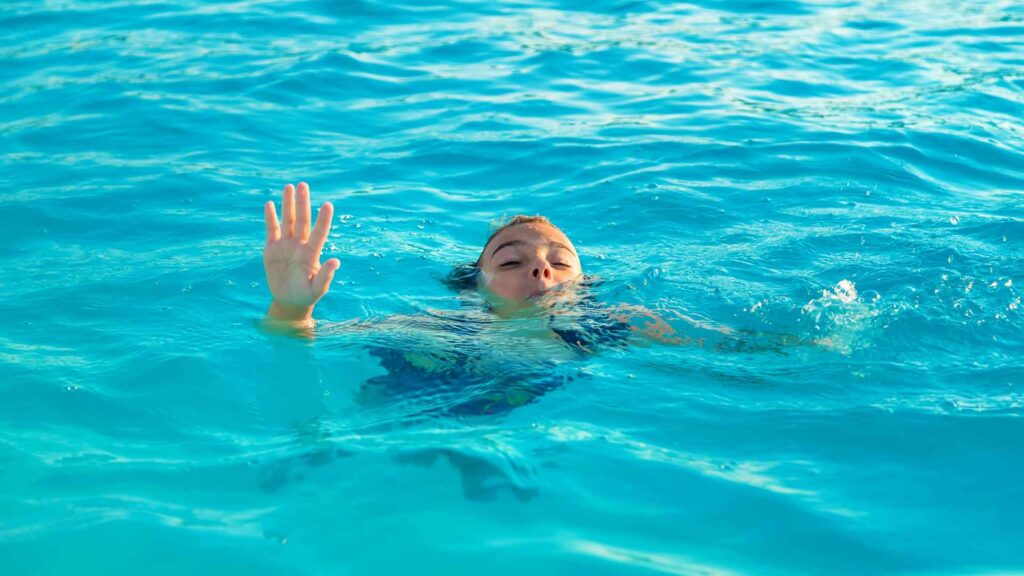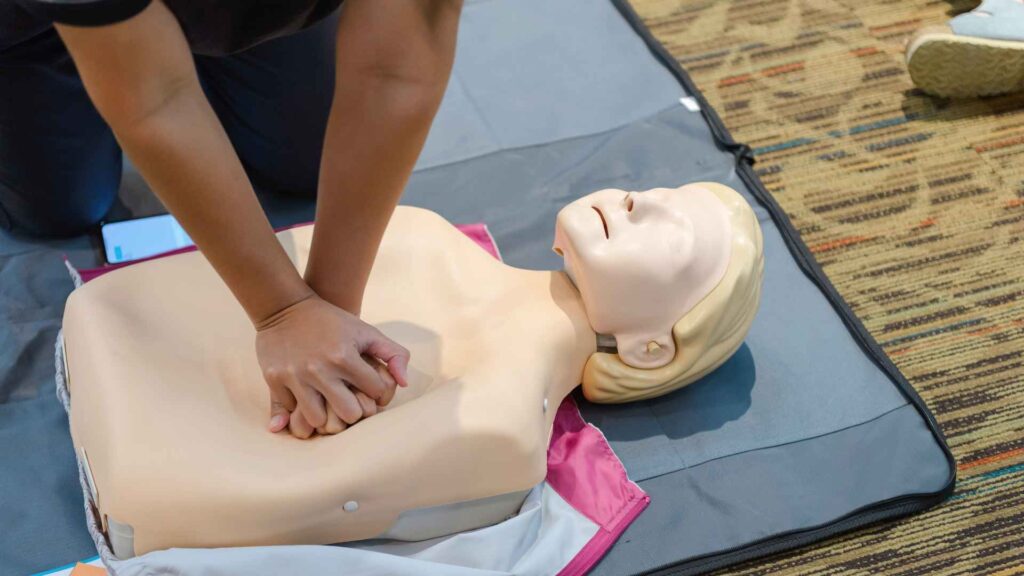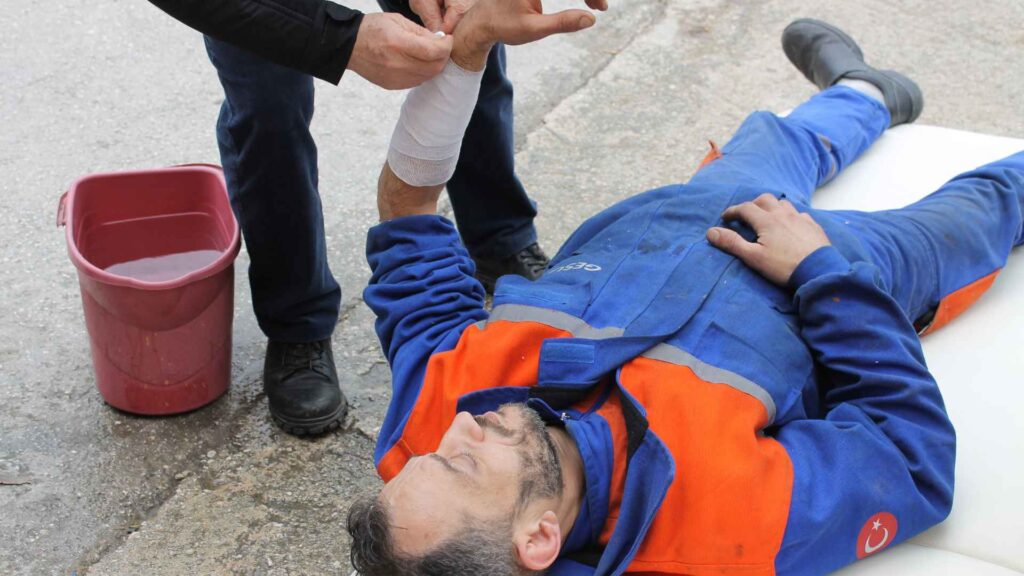In a previous article we published, we gave you an overview of two basic programs available as part of our Toronto first aid course options. The article covered the content and extent of knowledge those training courses provide.
In this article, we will be giving you an overview of several medical emergency scenarios and a comprehensive guide on best practices for handling them. It is crucial to emphasize that knowing what to do and being actually trained to do it are two very different things. This article will give you an idea of how to act and what aid techniques to provide in various situations, but under no circumstance should this online guide be taken as official training or certification.
Only a person trained and certified should be performing CPR and administering first aid to an injured person. In other words, you should really know what you are doing. Certification is also very important—some countries have laws where providing CPR without certification could result in legal liabilities. Organizations like the Red Cross and Coast2Coast First Aid offer accredited aid courses to ensure first aiders are fully prepared for real-world emergencies.
There is great value, however, in understanding what may occur and how to react, even if you are not yet trained or certified. Having a well-stocked first aid kit and knowledge of immediate care techniques can make a significant difference in an emergency situation. Let’s proceed.

Cardiac Arrest First Aid
Cardiac arrest can happen without warning as a result of injury or internal failure. When a person becomes unresponsive and stops breathing, or stops breathing normally, it is crucial to act quickly. The first step in this aid guide is to call 911 or get someone to dial the emergency number if you are unable.
If you are trained in first aid, you should begin CPR immediately, following the proper aid steps. If an Automated External Defibrillator (AED) is available, use it as soon as possible to improve the chances of saving a life. Keep administering CPR until the injured person regains breathing or until trained first aiders arrive to take over.
Having a well-equipped first aid kit on hand can be crucial in these situations. Organizations like Coast2Coast First Aid, certified by the Canadian Red Cross, offer comprehensive guide materials and training courses to ensure individuals are prepared to handle medical emergencies effectively.
Joint and Spinal Injuries First Aid
Joint and spinal injuries can be serious and require immediate attention to prevent further harm. If a person experiences a suspected spinal injury due to a fall, accident, or impact, it is critical to minimize movement to reduce the risk of further damage. The first aid steps involve keeping the individual as still as possible, calling 911, and monitoring their breathing. If they are unresponsive but breathing, avoid repositioning them unless absolutely necessary for safety reasons.
For joint injuries, such as sprains or dislocations, proper first aid can help reduce pain and swelling. The recommended aid steps include resting the affected area, applying ice, compressing with a bandage, and elevating it if possible. First aiders should avoid forcing the joint back into place, as this could cause further injury. If there is severe pain, deformity, or inability to move the joint, seeking medical attention is essential to prevent complications.
Having proper training in first aid can be lifesaving in these situations. Coast2Coast, a Red Cross trianing partner, provide courses that teach individuals how to assess and respond to joint injuries and spinal injuries in an emergency. Knowing how to handle these conditions correctly can make a significant difference in preserving mobility and quality of life for the affected person.
Register for CPR or First Aid Training

Drowning Emergency First Aid
When a person is drowning, the first thing you need to do is get a lifeguard to notice and respond. If no help is available, remove them from the water as quickly as possible while minimizing risk to yourself. Carry them face up to ensure they have access to air. Once on dry land, immediately assess their health by checking for breathing and pulse. Proper first aid at this stage can be critical in an emergency situation.
If the person has a pulse but is not breathing, turning them on their side or at a 70% angle may help expel water from their lungs. However, if there is no pulse, you must begin CPR immediately to save their life. Administer chest compressions and rescue breaths, continuing until they regain breathing or professional medical assistance arrives. Knowing these techniques can significantly increase survival chances in water-related emergencies.
Drowning affects the entire body, and secondary complications such as head injuries or shock can occur. Providing proper first aid and calling for emergency medical services is essential to ensure the best possible outcome. Being trained in CPR and water rescue techniques can make a crucial difference in preserving both health and life in these high-risk situations.
Severe Loss of Blood First Aid
When a person is bleeding due to a physical injury, the first priority is to provide immediate first aid to control the bleeding and prevent further complications. Start by removing any loose debris from the wound, but do not attempt to extract deeply embedded objects, as this can worsen the bleeding. In an emergency, stopping blood loss quickly can mean the difference between life and death. Apply firm pressure using a clean bandage or cloth to slow the bleeding and help stabilize the body.
Once initial pressure is applied, maintain it by tightly securing the wound with a bandage, cloth, or adhesive tape. If the bleeding continues, apply additional layers of bandages rather than removing the original one. It is also crucial to keep the person lying down to reduce blood pressure and minimize the risk of shock. If the injury is severe, professional medical attention should be sought immediately. Coast2Coast, like the Red Cross, offers training on how to handle severe bleeding and other emergency situations effectively.
If the person becomes unresponsive and stops breathing, CPR may be required to sustain their life until help arrives. Additionally, always check for other potential injuries, such as head trauma, and take necessary precautions to protect the wounded individual from further harm. Proper knowledge of first aid can make a significant difference in critical situations.

The Importance of First Aid Training in Emergencies
Emergencies can happen anytime, and having the right first aid knowledge can make all the difference in saving a life. Whether it’s cardiac arrest, drowning, severe bleeding, or spinal injuries, recognizing the signs of an emergency and following proper instructions can help reduce risks and improve outcomes for the injured person. While this guide provides an overview of essential aid techniques, hands-on training is the best way to build confidence and readiness in real-life situations. If you want to learn more on how exactly to respond to those and other scenarios, enroll in our Toronto first aid course for detailed first aid training and certification. Stay safe and smart!




















No comment yet, add your voice below!